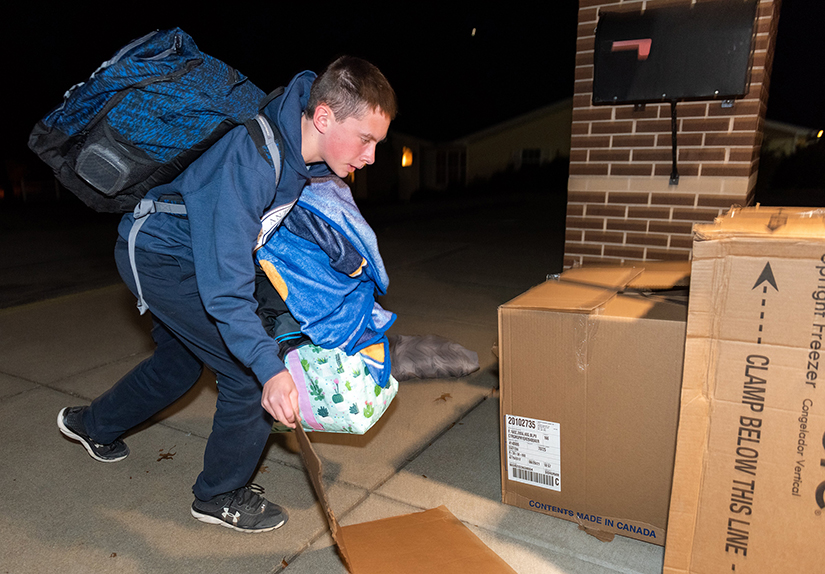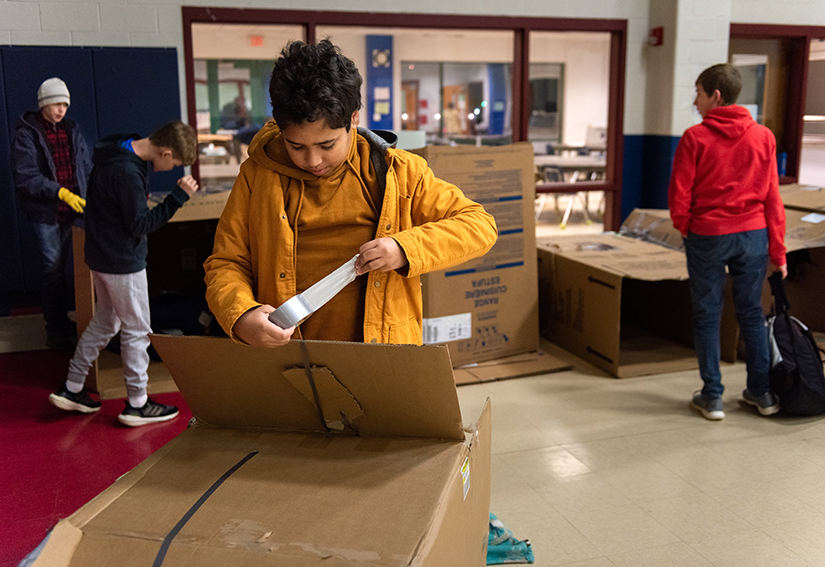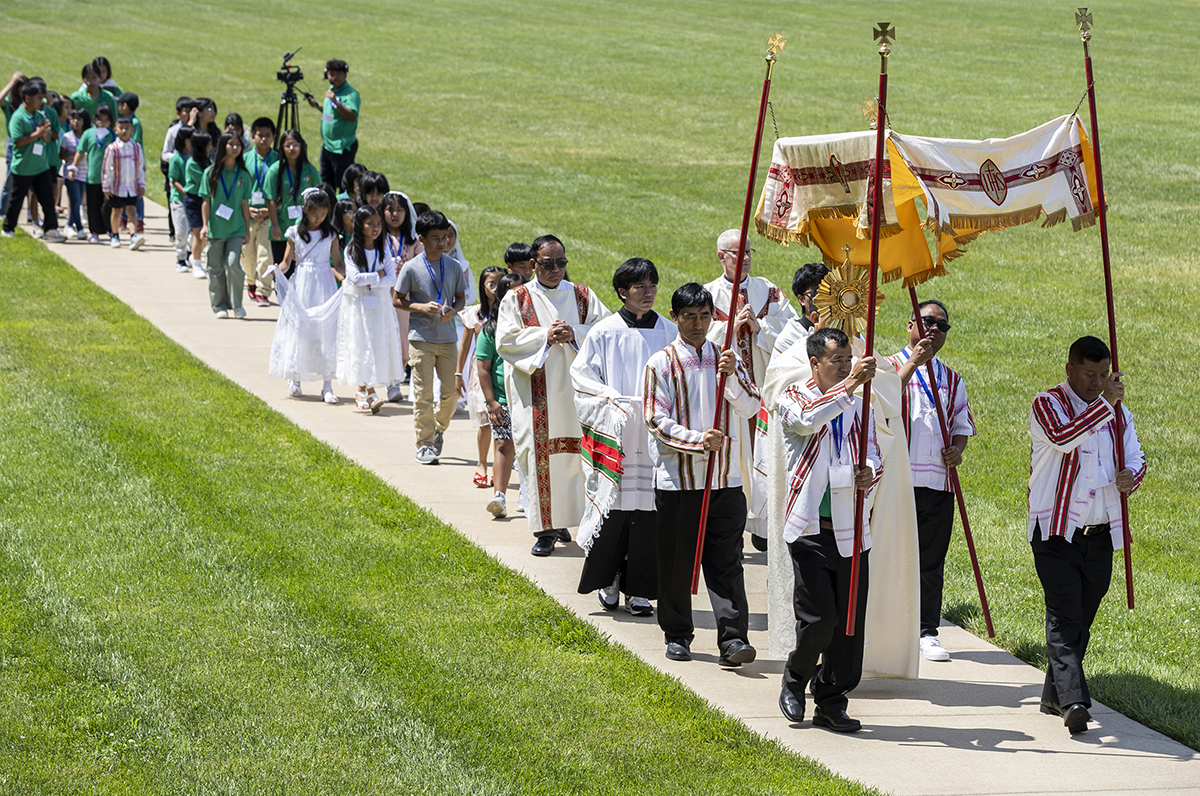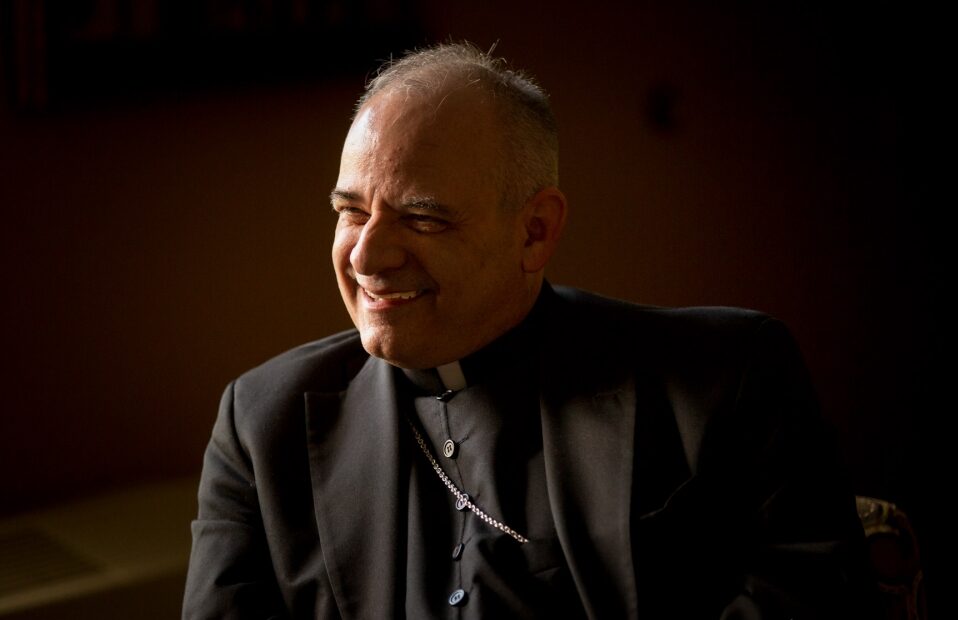Students at St. Anthony in Sullivan dive deeper into topic of homelessness through simulation activity

Seventh- and eighth-graders at participate in overnight activity as part of Confirmation preparation
Seventh- and eighth-grade students at St. Anthony School in Sullivan received an eviction notice at approximately 7:50 a.m. on Nov. 18. The students were asked to leave class and promptly remove their belongings from their lockers.
As newly “homeless,” they joined with PSR students later that day in making temporary shelters out of cardboard boxes. For these 13 students, it was the beginning of an overnight immersion experience to dive deeper into the reality of homelessness.

The activity is a tradition for seventh- and eighth-graders preparing for the Sacrament of Confirmation at St. Anthony School and PSR. It started about 15 years ago by now-retired teacher Barb Brendel to teach students and consider solutions to poverty and homelessness.
Students participated in several simulation activities, met a volunteer with Peter and Paul Community Services and learned about area homelessness from a Sullivan police officer. Students spent the night in the school gymnasium, which was set up as a makeshift shelter.
“When somebody asks you what you want to be someday, no one answers homeless,” said principal Mary Wooley. “There are a lot of factors that go into being homeless.”
One of the simulation activities included giving each student a character with some basic identifying information, and scenarios to consider. For each scenario that had a negative outcome, they took a step forward toward homelessness. Those that were positive scenarios took a step backward.
Eighth-grader Isabelle Bolte played the role of “Tammy,” a 15-year-old girl living on the streets. The character ran away from home because her mother had an alcohol addiction and her father abused her, and she dropped out of school.

Isabelle learned quickly through the role-playing activity that homelessness has many different faces, adding that she now has has a deeper understanding of the hurdles that people might face. Homelessness, she said, is not a one-size-fits-all issue.
“There are places for people who need help,” she said. “I realized you don’t have to make new (resources) — it’s about helping to get the word out.”
Lucien Morrison said the activity helped open his eyes to the reality of poverty and homelessness and how people are called to help one another. Lucien shared how he recently participated in Scouting for Food, which collects non-perishable food items for local food pantries.
“In the Bible it says we must help one another,” said the seventh-grader, who is homeschooled and attends PSR at St. Anthony. “There are many places that help the homeless and are faith-based.”
Pat Haefner, a former St. Anthony parishioner, spoke to students about her volunteer work with Peter and Paul Community Services, a St. Louis-based agency that provides housing and supportive services to individuals who are homeless, experience mental illness and/or live with HIV.

Haefner and her late husband, Deacon Tom Haefner, helped serve meals at the shelter in Soulard, along with their grandson Cameron Oppelt, who came along with his grandmother to speak with the students.
“I think we have a jaded idea of what a homeless person is,” she said, noting some of the negative stereotypes that are often heard, including laziness. “I wanted to let them know … many different factors can cause you to become homeless. You can be just one day away from homelessness. If dad loses his job, and you can’t pay the rent or the mortgage … what do you think you’re going to end up doing?”
After participating in the activity, students were expected to discuss ways to address the topic of homelessness and to come up with a future service project. Past classes, for example, have held drives to collect coats, hats and other personal care items.
Homelessness in the U.S., Missouri
A 2020 assessment report from the U.S. Department of Housing and Urban Development shows that homelessness increased significantly among unsheltered populations and people experiencing chronic homelessness between 2019 and 2020.
The report found that 580,466 people experienced homelessness in the United States on a single night in 2020, an increase of 12,751 people, or 2.2 percent, from 2019. In Missouri, 6,527 people experienced homelessness on any given night, an increase of 5.6 percent from 2019.
HUD releases the Annual Homeless Assessment Report to Congress (AHAR) in two parts. Part 1 provides Point-in-Time (PIT) estimates, offering a snapshot of homelessness — both sheltered and unsheltered — on a single night. The one-night counts are conducted in January each year. The counts also provide an estimate of the number of people experiencing homelessness within particular populations such as individuals with chronic patterns of homelessness and veterans experiencing homelessness.
In 2020, the PIT estimates of people experiencing homelessness in sheltered and unsheltered locations, as well as the number of beds available to serve them, were reported by 396 Continuums of Care (CoC) nationwide. These 396 CoCs covered virtually the entire United States.
The Point-in-Time counts of homelessness and the housing inventory information are based on data from January 2020 and don’t reflect health or economic consequences of the COVID-19 pandemic for levels of homelessness or characteristic of people experiencing homelessness.
To read the full report from the Department of Housing and Urban Development, see https://stlreview.com/3CIIhDB.






